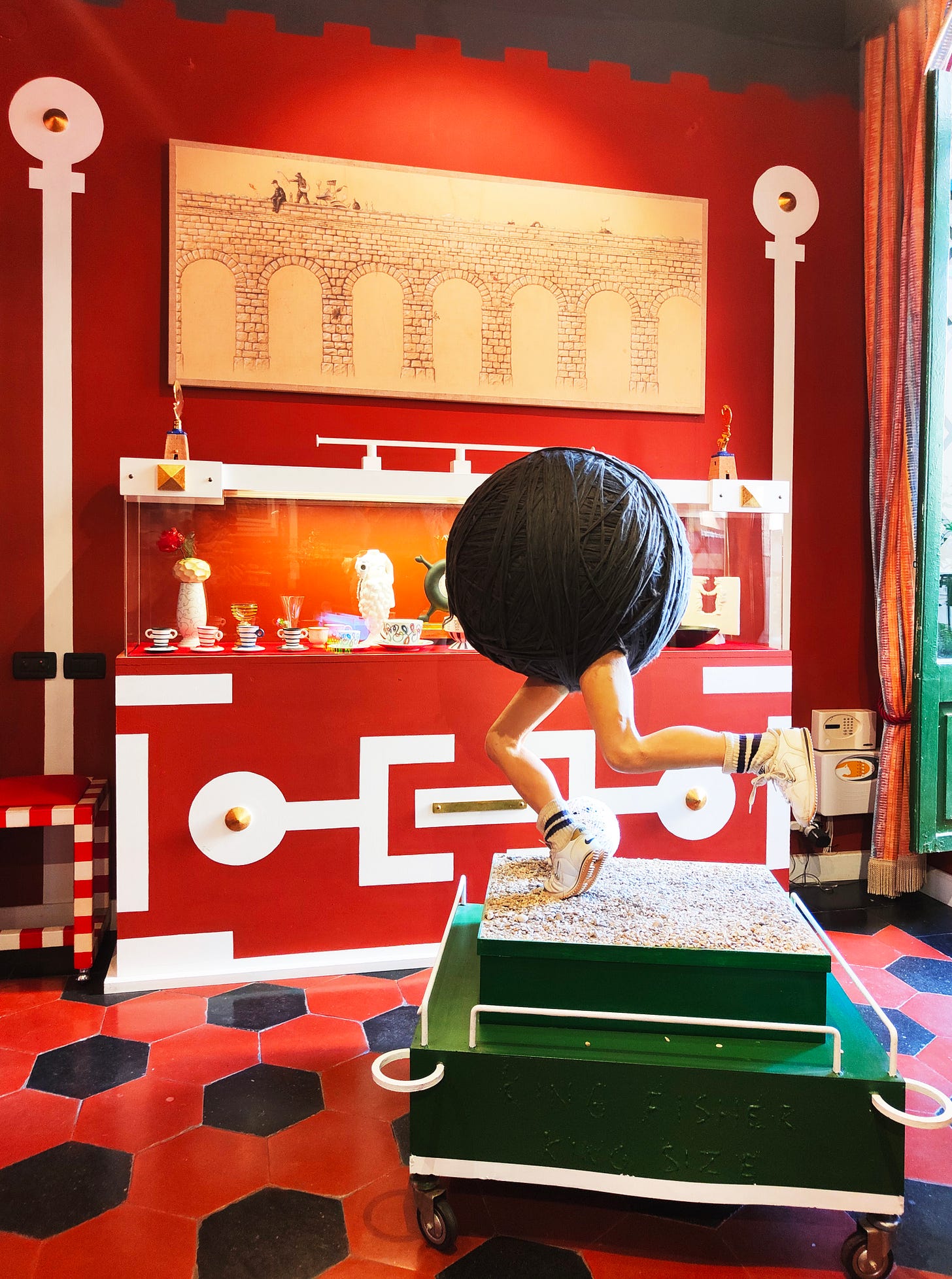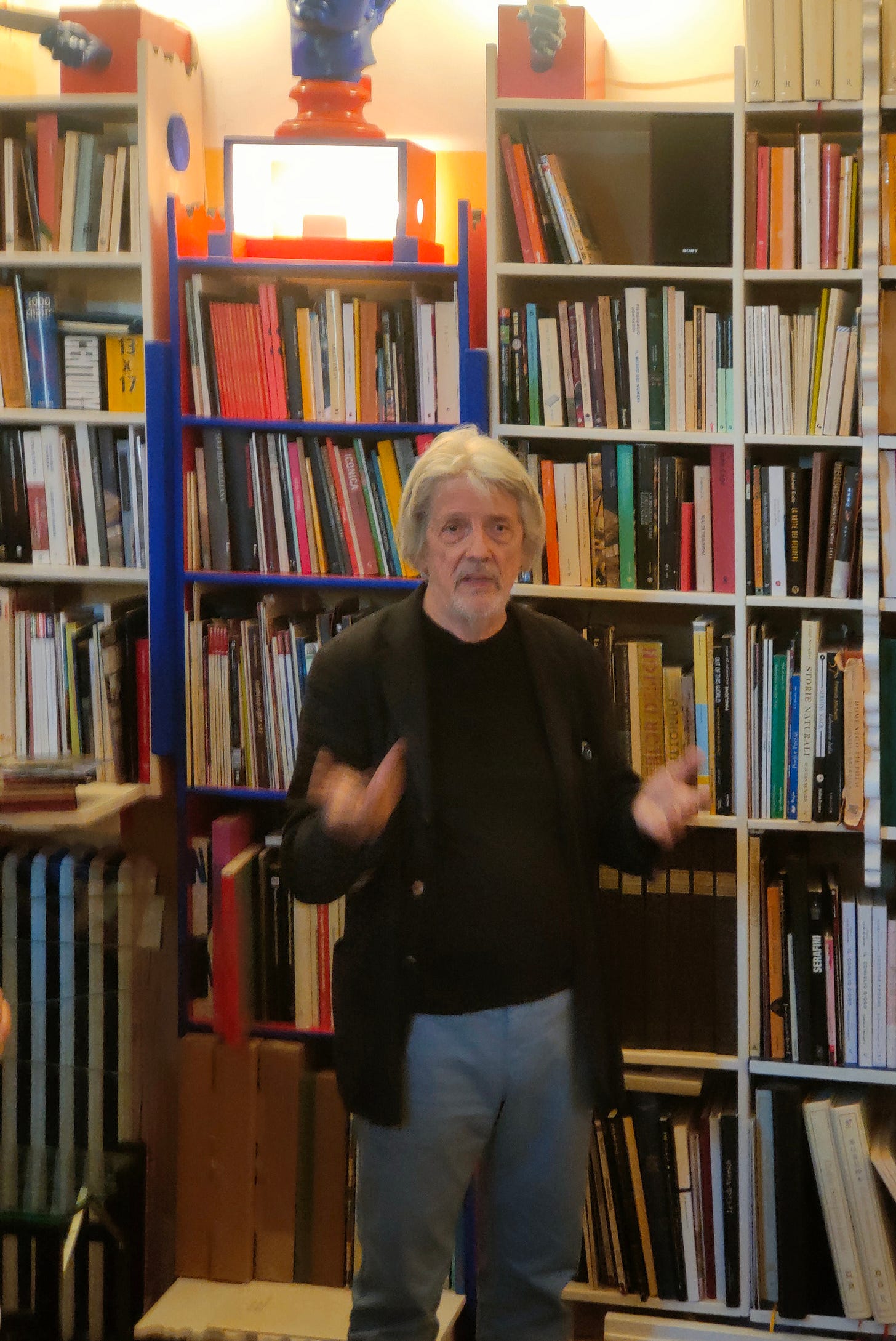Being Luigi Serafini: a visit to the artist's home-studio is like entering a mysterious portal into his incredibly creative mind.
This weekend's Open House tour gave the public a rare view of Serafini's mythic residence. The artist's home becomes a momentary refuge for fantasists, dreamers and curiosity seekers.
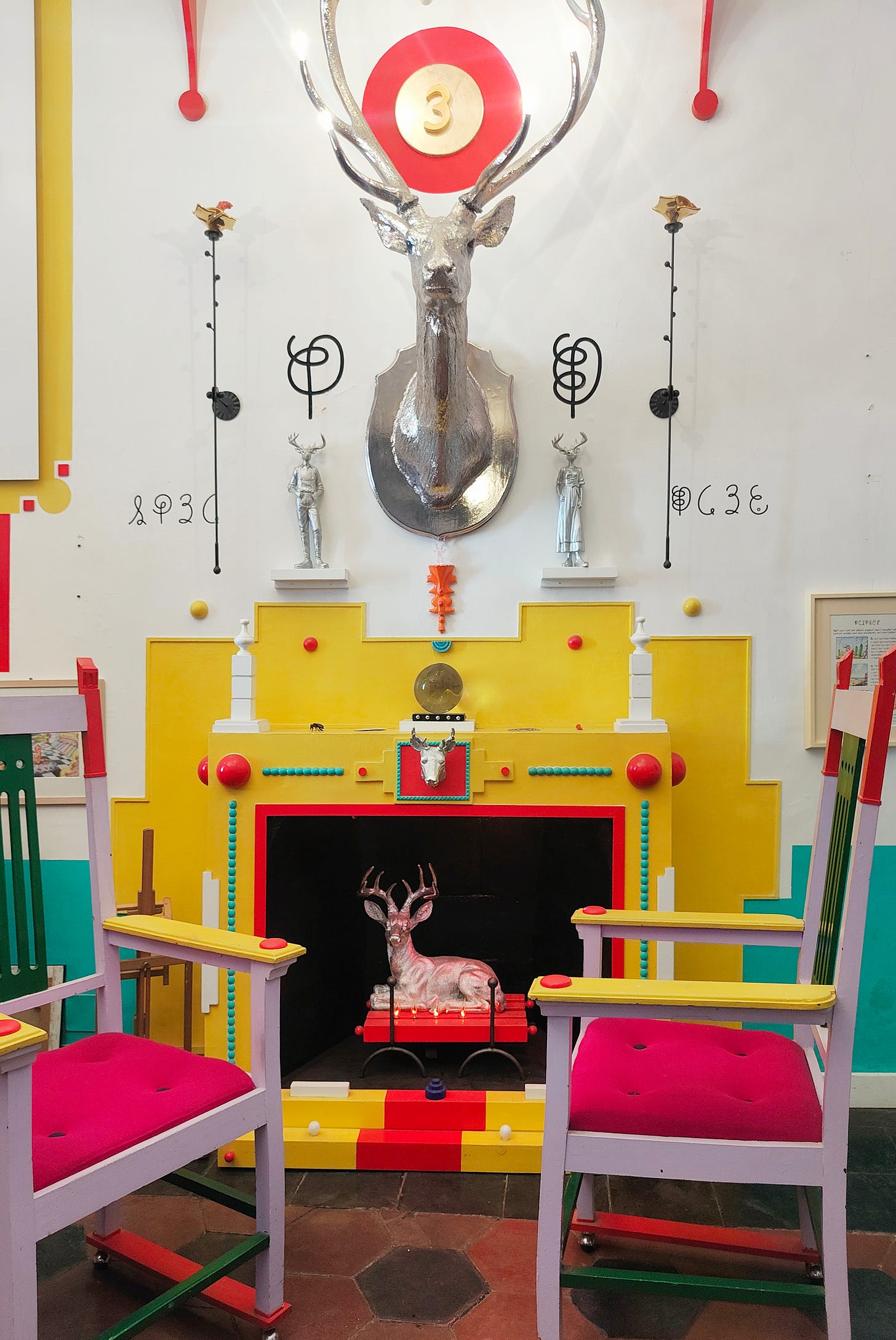
For two weekends every year, well informed locals and savvy tourists dash about the capital city of Rome to visit some incredibly spectacular homes, public buildings, and other architectural oddities that are open to the public courtesy of the Open House Roma (OHR), a non profit organization that introduces local architectural treasures to curious audiences. Open House began back in 1992 in London, and has grown to become a highly popular worldwide phenomenon providing opportunities to visit extraordinary architecture in cities across all five continents.

A student in my class who has been studying the Codex Seraphinianus for our project on utopian postcards learned that Luigi Serafini, the acclaimed author of the Codex, had arranged to have his apartment open for public visits during this year’s XIII edition of the OHR program. This news sparked my interest and I decided to make it to one of the organized visits. Only when I got there I realized this wasn’t going to be a regular architecture tour like I had originally expected.
The palazzo, almost half a block in size, located only a short distance from the Pantheon, is noticeably empty: there are no other occupants living in the building, except for one single apartment belonging to Luigi Serafini. To get to his place, you need to cross a dusty abandoned courtyard and step past a crumbling grotto to get to single broad staircase.
Its very strange, the whole building is ghostlike, but it all changes when you reach the floor of Luigi Serafini’s home-studio. As you peer across the threshold you quickly get the impression the house is stuck in some kind of time warp. We slowly filed into the apartment—there were about 40 of us altogether for this tour—and as we dispersed into every corner of the room we didn’t leave a square centimeter untrammeled. But as I found a place to stand, crowded against a wall and stuck in front of a strange moving wheel, I felt myself falling under some kind of spell, I began to feel dizzy.
I turned my attention to Luigi Serafini, who was there in front of us, neatly dressed, with an greying pageboy haircut and tightly cropped goatee. From what I could tell, we really weren’t in an apartment but in some kind of strange fantasy interior. Then it hit me, it was as if I was in the film “Being John Malkovich” and I had just climbed inside a portal that led directly into the mind of Luigi Serafini.
Once I came to this realization, everything started to make more sense. The strangeness of this huge palazzo next to the Pantheon with only one living residence. The apartment filled floor to ceiling with artworks, indescribable sculptures, mechanically rotating mobile objects, stuffed animals and artificial plants, undecipherable words painted on the walls, and all sorts of strange and surreal knick knacks. The extreme vicinity to the Pantheon. The hordes of tourists below. It did somehow remind me of the Mertin-Flemmer building where you had to get off the elevator between the 7th and 8th floor.
There was no longer any doubt, we were inside Luigi Serafini’s head. Surrounding us were the creative prompts that made him dream and imagine: books, magazines, computers, oil tubes, brushes, empty canvases, pens and pencils, copy-machines, chairs, tables, easels, files, file cabinets and all kinds of working surfaces.
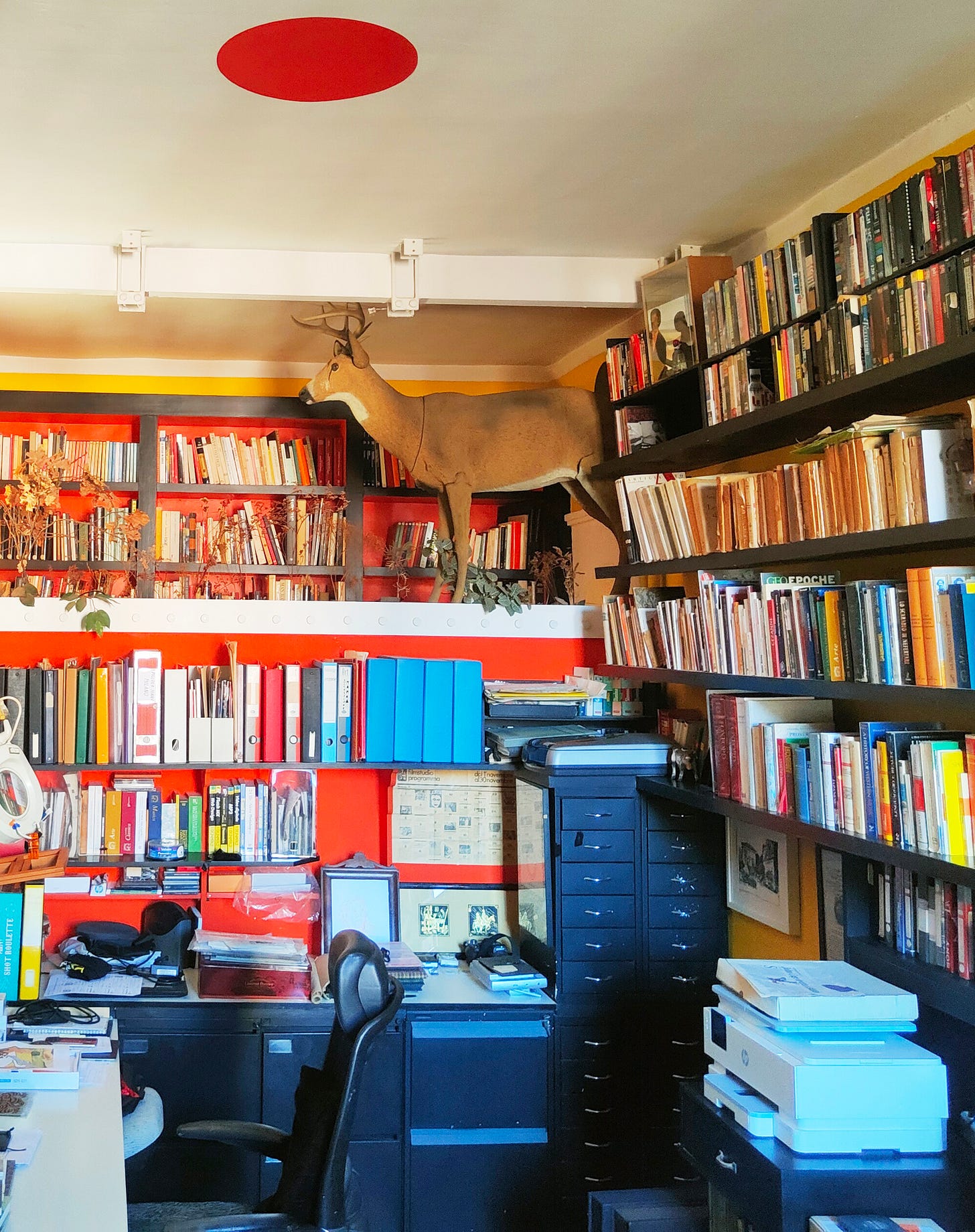
Obviously, to be inside Luigi Serafini’s head is to be inside his mythic Codex Seraphinianus, the phantasmagorical masterpiece published in 1981 by the legendary Franco Maria Ricci. True, the Codex is basically meaningless, the accompanying texts are intentionally unintelligible, the drawings act as diagrams and illustrations for purposes that remain largely unknown, but there is an unmistakable message that stands out all the same. Luigi Serafini is a fully actionable myth-making machine, everything he sees, everything he encounters gets processed and mythologized. A plant becomes an umbrella. An animal becomes half human. A never before seen letter becomes a title for an unbelievable story. And so on and so forth.
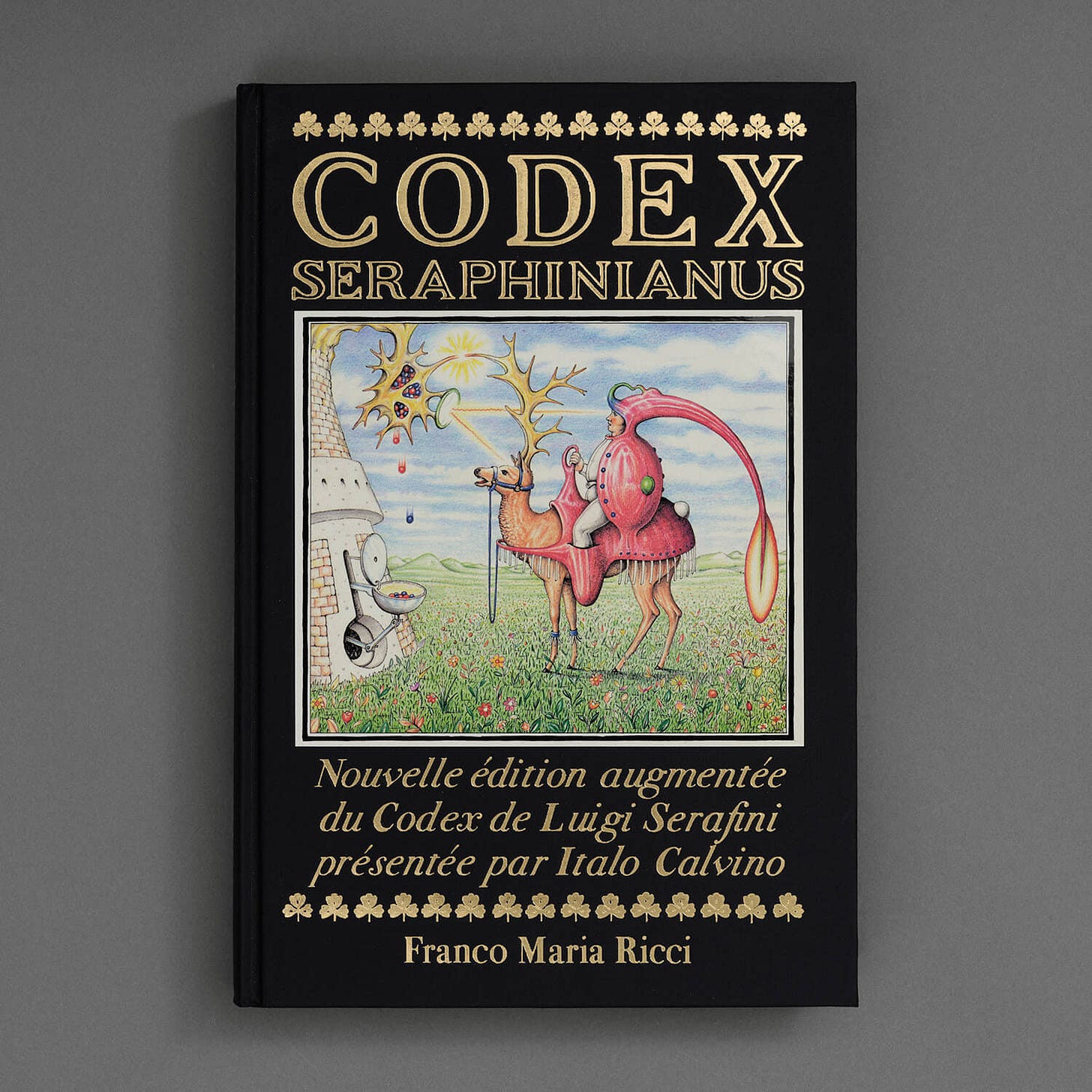
Peering from inside his mind to the outside world is absolutely transformative: the cluttered residence that doubles as Serafini’s mind liberates you of all your inhibitions, and you can begin to make connections to all kinds of things that don’t really exist in the real world. In other words, its like “Being inside Luigi Serafini.” You can begin to think like him, dance like him, and most importantly imagine like him too.
Not that living Luigi Serafini’s life would be easy to get used to. And in fact, within half an hour all of us were jettisoned outside the house-studio and thrown back onto the slippery cobblestone streets of historic Rome. It was not exactly like landing on the side of the New Jersey Turnpike. But then again, to find yourself surrounded by masses of selfie-taking tourists crowding the narrow streets with cars edging around them is frightening and disorienting all the same.
Back out on the streets of Rome again, I couldn’t help think of the multitude of references to plants and insects, mutated human figurines, Pulcinella-like puppets, sculptures and horned reindeers— “cervi” that were in every angle of Luigi Serafini’s home-studio. I had to get hold of myself, so I decided I would need a coffee to sort this all out and I remembered that the famed café Sant' Eustachio Emporio was just around the corner from where we were left standing.
On the way to the café, I rounded the block and ran smack into the Fountain of Books. The fountain, first installed in 1927, is set within a shallow arched niche. There are two pairs of books on flanking sides representing the Sapienza University next-door, with fountain spouts for bookmarks. At the center of the fountain is the head—oh my God—of a reindeer, an obvious reference to Sant’ Eustachio, the patron saint of this Rione. Saint Eustachio, according to legend, converted to Christianity when he was on a routine hunt in the forest and he suddenly found himself facing a majestic reindeer with a cross held high between his antlers.
I began to worry I would see the reindeer everywhere I looked. And yes, it was even way on top of the local basilica. Damn, I thought, I was outside of Serafini’s house but I was still inside his mind. I needed something stronger than a coffee and so I headed for a real drink.
The Open House Roma program runs through the weekend 31 of May to the 1st of June.




